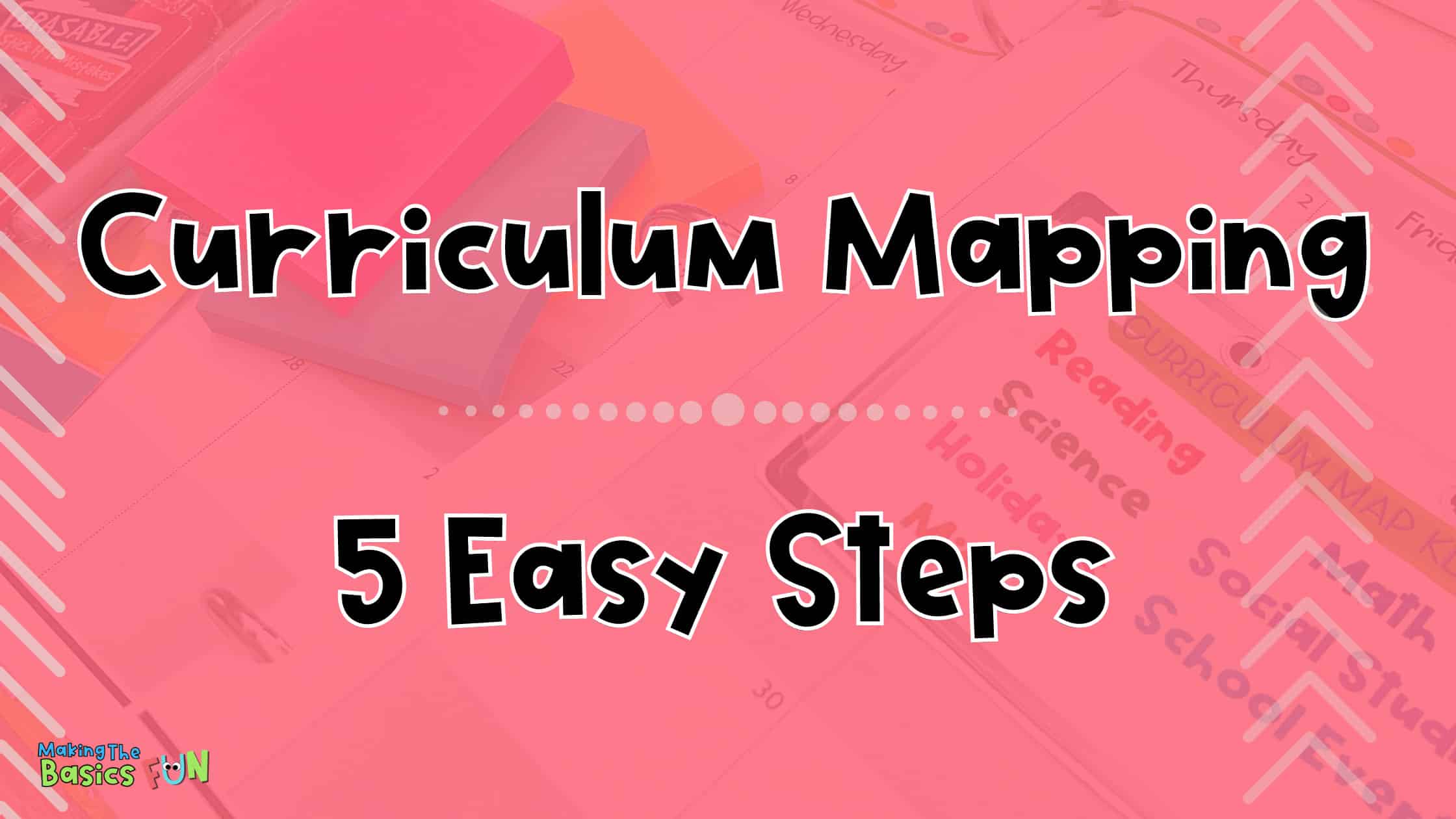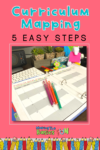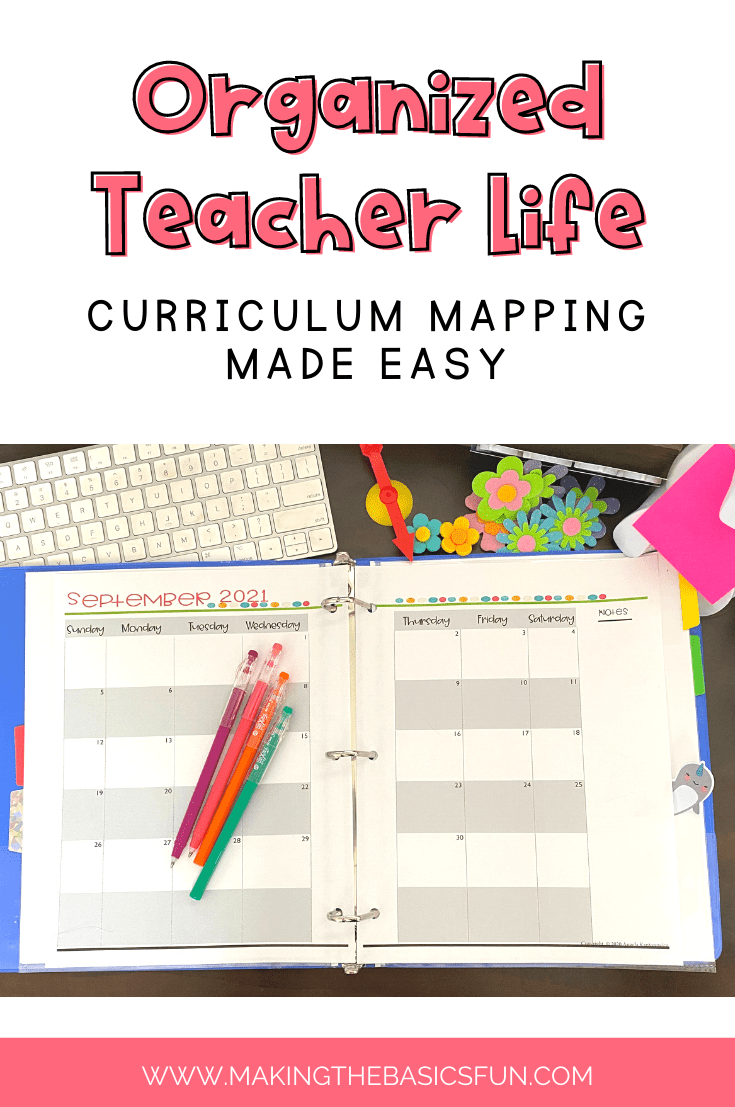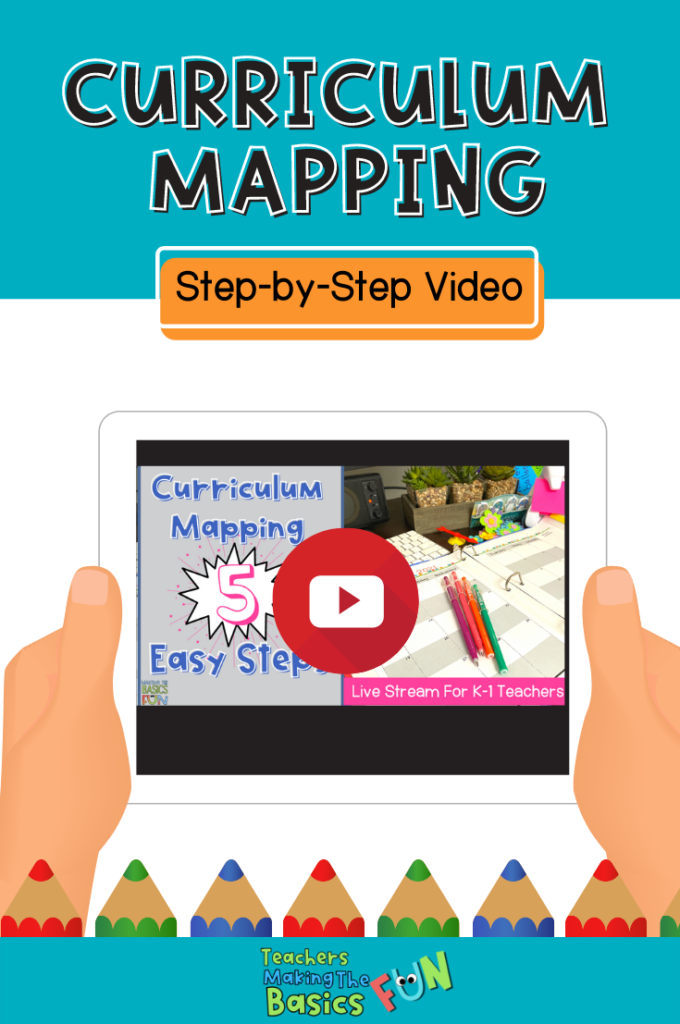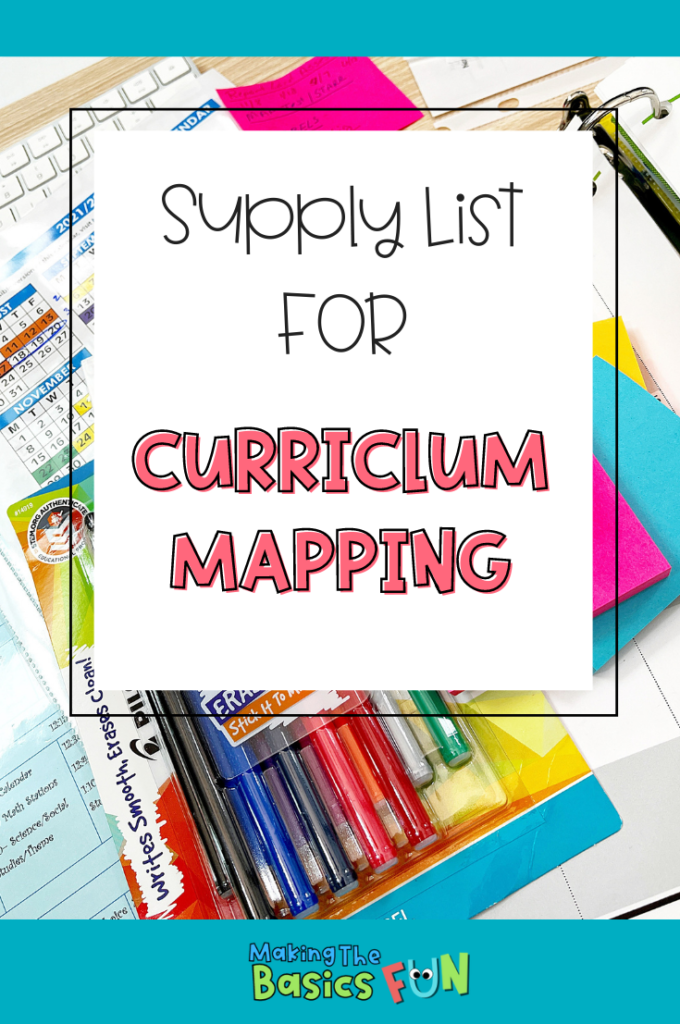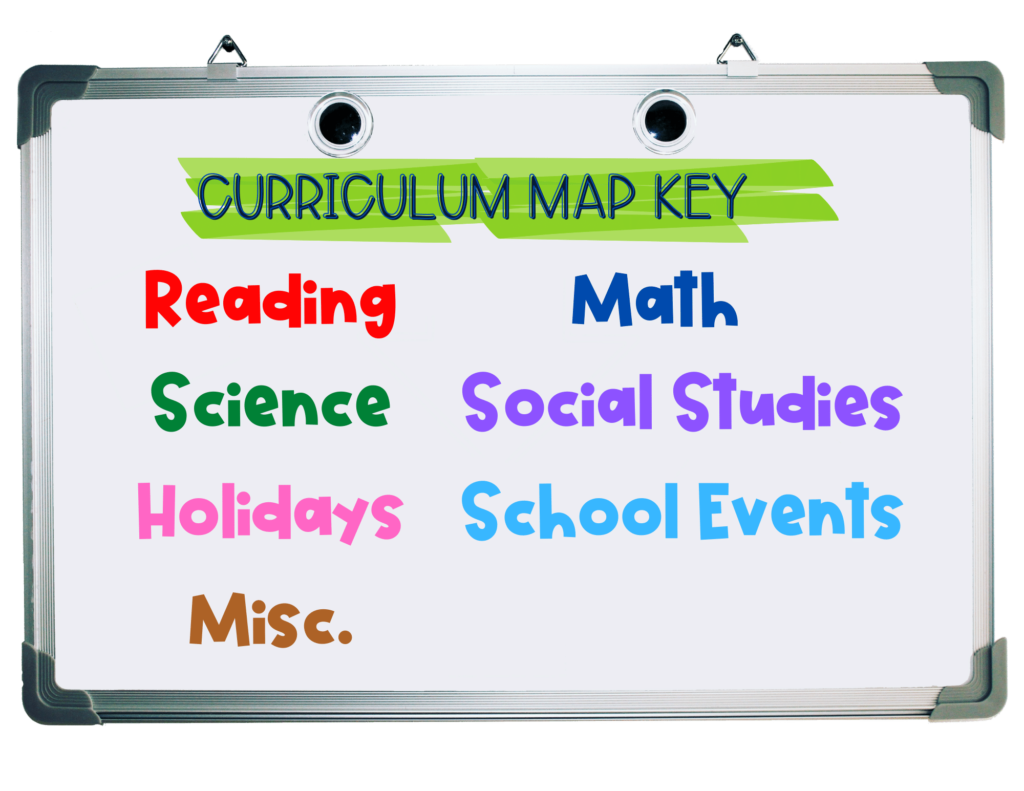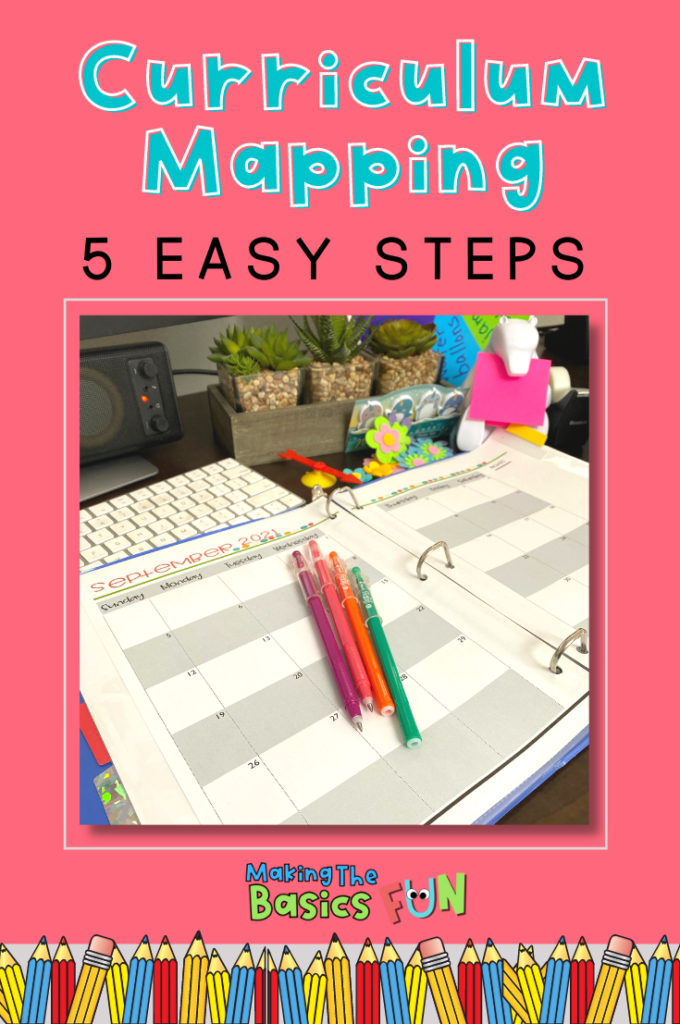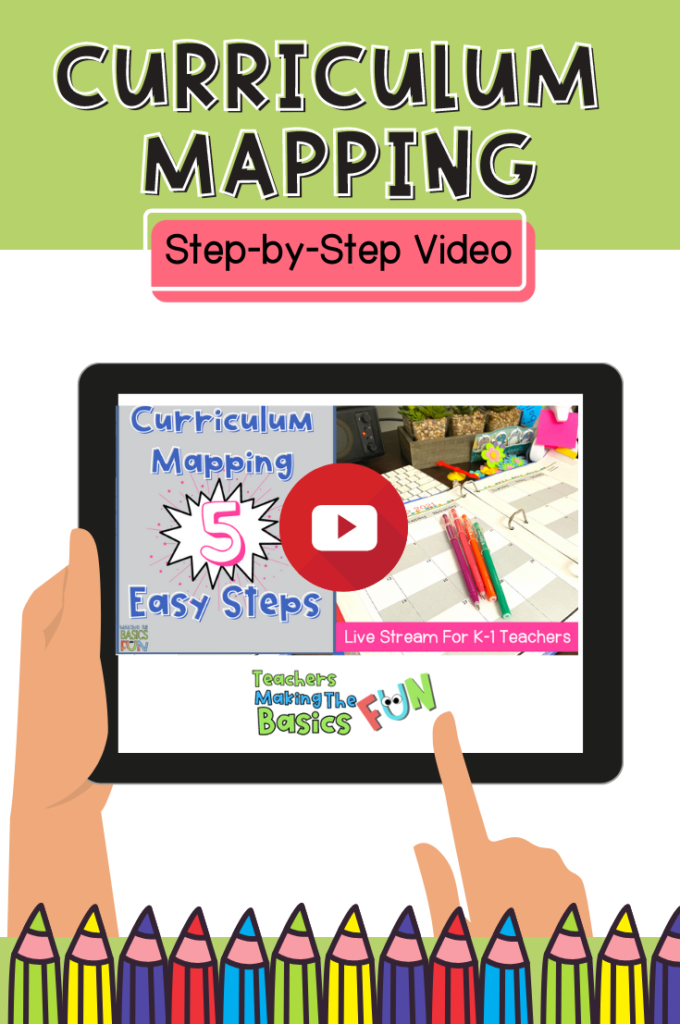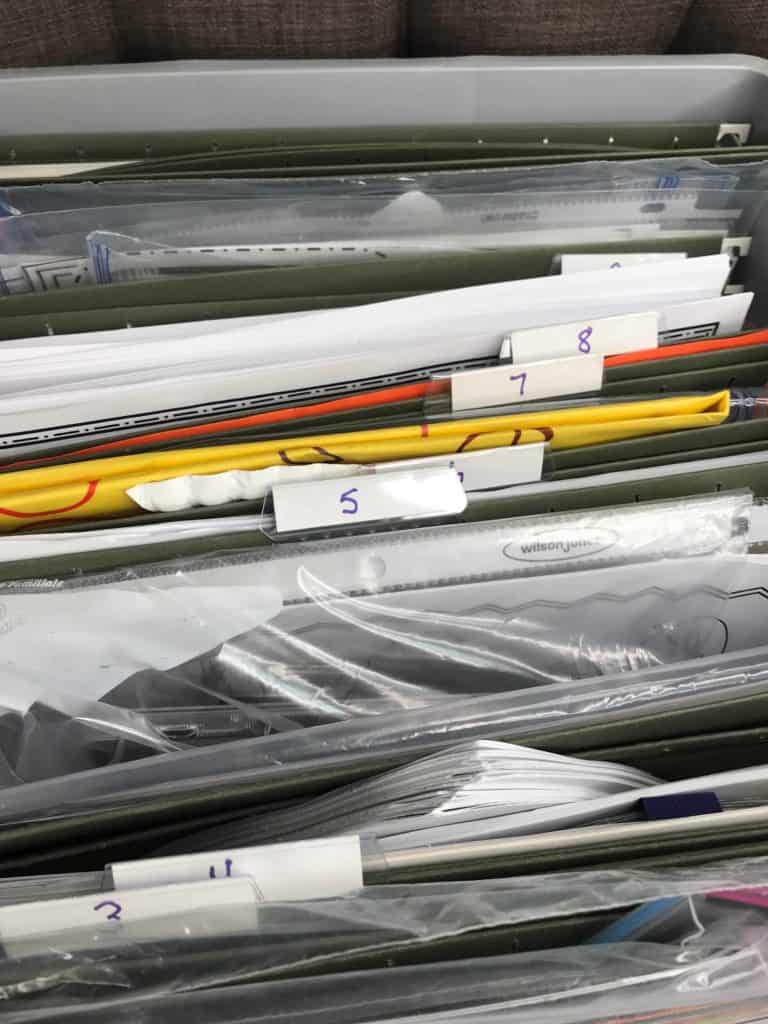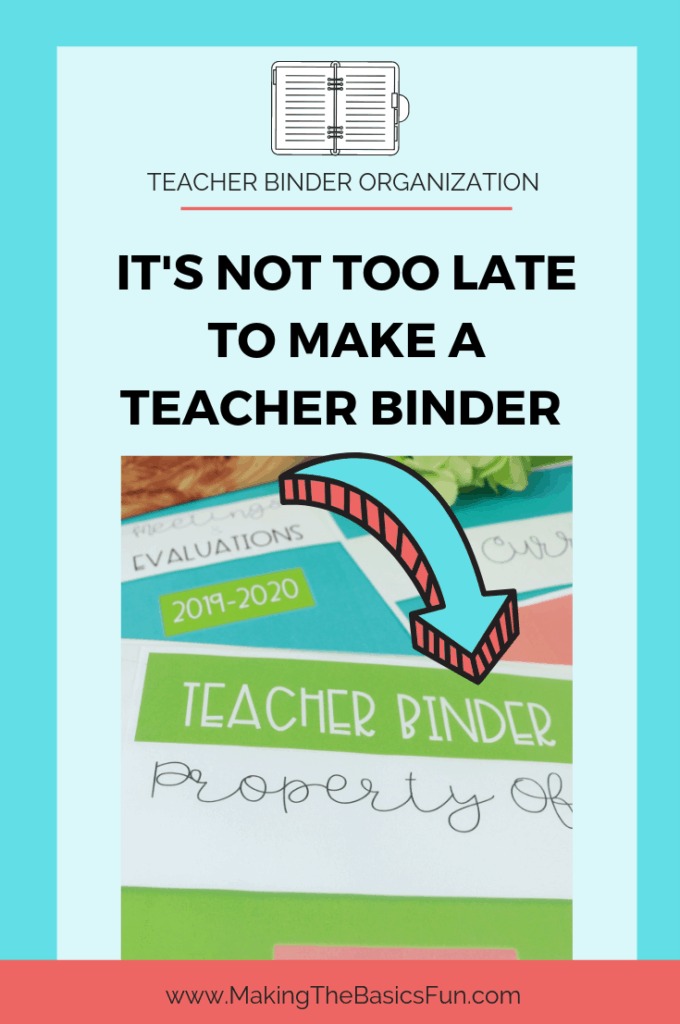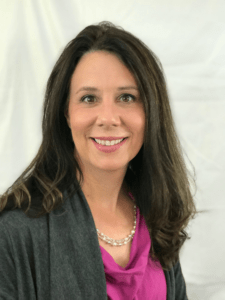Share Like A Boss
Write A Curriculum Map In 5 Easy Steps
You can get your curriculum mapping done in 5 easy steps. Scroll down to watch the YouTube video where I show you exactly what you need and how to get this boring but necessary task done.
But what if you decide that writing a curriculum map is not for you? What if you want to be a fly by the seat of your pants person? Well I’m feeling what you feel. I’d much rather just go where the day takes me but here’s what I’ve learned…the hard way.
Consequences of NOT Doing a Curriculum Map
You Waste Time
Every week when you plan you drag out all the materials. The teacher texts, the tests, the calendars etc. If you have extra time then don’t do a curriculum map.
Curriculum Map Advantage: You drag out all that stuff at one time. You know the important dates and events. They’re on the curriculum map. You know the specific skills, page numbers, and needed materials. They are planned on the curriculum map.
You Won’t Cover Important Curriculum
The main reason you should do a curriculum map is because you want to make sure your students learn and master the important skills they need to progress through school successfully. Don’t leave a big gap in their learning because you ran out of time to teach it.
A good curriculum map also makes sure you repeat assessment of skills to ensure they haven’t been forgotten.
Curriculum Map Advantage: No more stressing for those end of year tests. You’ve taught and they’ve learned what they will be tested on. Now I know those tests suck. And a lot of the time they are not a great indication of what your students know. BUT I know you can know in your teacher heart that your students know their stuff even if it doesn’t show up on a standardized test. And how do you know… You knew from day one what they were going to learn and how you were going to get them from point A to point B. That’s called being an excellent teacher.
You Will Always Be Wondering “What’s Next”
If you like surprises and the feeling of being unprepared then don’t do a curriculum map. Every week you’re going to sit down to do your lesson planning and you’re going to say these words, “I wonder what’s next?” and then you are going to get a bit of a lump in your throat because there’s ALWAYS a curve ball or a surprise. “What the heck. We aren’t doing this.” is what you’ll say. But then… what will you do…Humm.
Curriculum Map Advantage: When you sit down to build your curriculum map it takes all the guesswork out of your weekly lesson plans. You know what needs to get done. You know what’s important. It frees up your creative juices and allows you to destress and have fun building lessons.
Why Write A Curriculum Map?
-Big-picture view of the year
– Focus on essential skills and assessments, benchmarks
– Begin with the end in mind
– Allows for effective cross curricular content planning
– Platform for collaboration and peer support
– Reduces risk of holes in skill building and mastery
– Teacher timesaver
– Plan content and fun
– Lesson planning made easy
Write Your Curriculum Map In 5 Easy Steps
These 5 steps will guide you as you make your curriculum map. You will get tips for each step to make this process easy and fast. In the end you will have a curriculum map that you will actually use. (gasp)
Step 1 Gather Supplies
Step 2 Make a Color Coded Annotation Key
Step 3 Use A Calendar to map out non curricular events (holidays, school events etc)
Step 4 Map Out Reading & Math First Using Color Code System
Step 5 Integrate themes, science, social studies etc into the map
Step 1: Gather Supplies For Your Curriculum Map
Gather these materials before you start your curriculum map. It’s important to look at your year as a whole event. There are times when you will be able to do more teaching and other times (around a holiday) that your students are going to be easily distracted and teaching/learning is going to look different.
Gather:
- A curriculum mapping template. Either for writing in it manually or editable on the computer. I like using a monthly map.
- Teacher Binder (Read The Post and Get a Free Teacher Binder Starter Kit)
- Sticky Notes (at least 2-3 different colors)
- Pens – I like erasable pens because I like the option of changing my mind.
- School Calendar
- Scope and Sequence of Curriculums (your grade and the grade before and after yours is also helpful)
- Curriculum materials your district might provide. (For example in Montana we have Indian Education For All curriculums and standards that have to be taught)
- Teacher’s manuals for each subject area
- Assessments
- Any other materials you are required to use
Step 2 Develop a Color Coded Annotation Key
This will keep things easy to reference and super organized. This is a critical step if you want to use your curriculum map each week to help write the weekly lesson plans.
I like this key.
Reading-Red Lessons/pages/Assessments
Math- Blue Lessons/pages/Assessments
Science-Green
SS- Purple
Holidays- Pink
School Specials- Light Blue
Misc. -Brown
Step 3 Seeing The Big Picture
Using the calendar template fill in your holidays, end of grading period, early outs, special school events. Anything that’s going to get in the way of a “regular day” of teaching.
During this step I also like to number my weeks on the curriculum map.
Then I have the date but I also have the week number to help me out when it comes to using the curriculum map when doing my weekly lesson plans and organizing learning materials and activities.
The week numbers correspond to folders in the crates that I use to make finding and organizing learning activities easier.
Step 4 Start With Reading Then Math
Reading
https://youtu.be/54KmBZI_w10?t=1514Now comes the important part. Taking a deep dive into the learning objectives that must be taught during the year. What is necessary? When is the best time to teach it and is this skill needed to learn an additional skill?
This is where your assessments, scope and sequences and teacher manuals are going to come in handy. Looking at your weekly and unit assessments are going to help you figure out what must be taught in order for the student to show mastery on these tests. The scope and sequence will help see how important those as well as non assessed skills are for your students. If you see a skill that isn’t assessed in a weekly/unit test but is in your scope and sequence and is essential then the best thing to do is develop your own assessment and materials to ensure it gets the attention it deserves.
Go to your calendar template and get out your red erasable pen and start plugging objectives, pages, etc into the calendar. Use the teacher guides to pace. If you have 35 units then you know that during your 36 weeks of school you are going to have to make some adjustments.
If you are lucky enough to have a grade level team, then this step is best done with them.
As you are planning you are going to think of fun/engaging activities that will help you teach your students. That’s when I like to get out the sticky notes. Place the week’s number on it and the material and stick it on the underside of the curriculum map. If you have no idea what I’m talking about check out the video at the 25:14 minute to see it in action. Here’s the direct link. https://youtu.be/54KmBZI_w10?t=1514
Math
Now you are going to do the same thing but with math. Use a different color pen. For math I chose blue.
When you are looking at essential math skills that ALL of your students need in order to move on to the next level a curriculum map is the cornerstone.
Math is very systematic and a good math series with a well planned scope and sequence is going to be a big help. I’d like you to consider using the routine of pretesting your students and then doing small group instruction with them according to their need. This is something that we do with reading but often it is overlooked with math curriculum.
Step 5 Integrate All Other Academic Areas
Integrate All Other Academic Areas
Now that you have the important Reading and Math learning objectives in place, now it’s time to fill the gaps.
It’s a little like tiling a kitchen backsplash. First you put the tile up (reading/math). You make sure it’s secure. Then you put in the grout.(Science, Social Studies etc) This helps to strengthen it AND it makes the wall last longer and it looks good. It’s a well rounded education.
Use different colored pens for each subject.
What About Music, Art and PE?
I love music, art and p.e. In fact my masters is in art integrations into the curriculum and I had one more class in college to get a health and p.e. endorsement (I chose to do a reading endorsement instead.) So it’s no big secret that I think these areas should be in every lesson. It’s fine when they are a stand alone but I think that music, art and pe are what get some kids super excited about school and what an excellent education must have. These are the tools that make learning fun, engaging and important to kids.
Put Your Curriculum Map In Your Teacher Binder
Now what? What do you do with this tool that you just spent a good amount of time on?
I think it goes right into your teacher binder. Put it right next to your weekly lesson plans. You are going to be looking at it every week to guide you in your planning. It’s a time saver, a stress reliever and it’s going to give you the confidence you need to know you are giving your students a well planned and complete educational experience. Yah YOU!!
Want More On Organizing Materials?
Check out this post on how I use crates, folders and the system of numbering my weeks to quickly plan materials/tools to teach learning objectives.
Share Like A Boss

